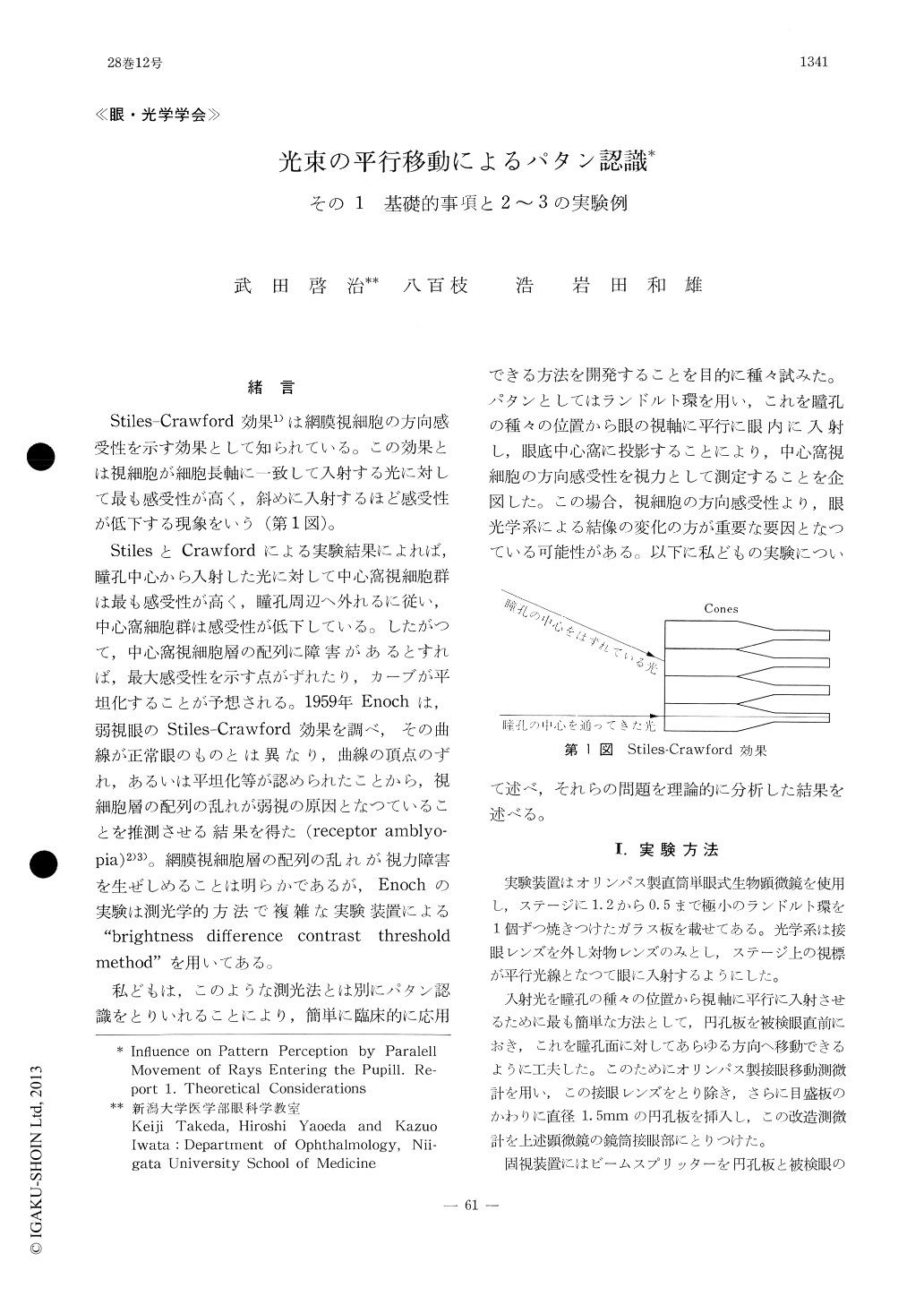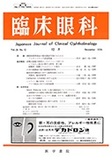Japanese
English
- 有料閲覧
- Abstract 文献概要
- 1ページ目 Look Inside
緒言
Stiles-Crawford効果1)は網膜視細胞の方向感受性を示す効果として知られている。この効果とは視細胞が細胞長軸に一致して入射する光に対して最も感受性が高く,斜めに入射するほど感受性が低下する現象をいう(第1図)。
StilesとCrawfordによる実験結果によれば,瞳孔中心から入射した光に対して中心窩視細胞群は最も感受性が高く,瞳孔周辺へ外れるに従い,中心窩細胞群は感受性が低下している。したがつて,中心窩視細胞層の配列に障害があるとすれば,最大感受性を示す点がずれたり,カーブが平坦化することが予想される。1959年Enochは,弱視眼のStiles-Crawford効果を調べ,その曲線が正常眼のものとは異なり,曲線の頂点のずれ,あるいは平坦化等が認められたことから,視細胞層の配列の乱れが弱視の原因となつていることを推測させる結果を得た(receptor amblyo—pia)2)3)。網膜視細胞層の配列の乱れが視力障害を生ぜしめることは明らかであるが,Enochの実験は測光学的方法で複雑な実験装置による"brightness difference contrast thresholdmethod"を用いてある。
The Stiles-Crawford effect is based on the assumption that the retinal receptors have direc-tional sensitivity. Visual disturbance might occur when the slignment of the retinal cell layers are disturbed. The curves for Stiles-Crawford effect were found to be distorted in some amblypic eyes by Enoch (1959), who called the amblyopia 'receptor amblypia'.
We carried out an experiment to apply the Stiles-Crawford effect to clinical tests, making use of pattern perception instead of photome-tric technique by Enoch.

Copyright © 1974, Igaku-Shoin Ltd. All rights reserved.


